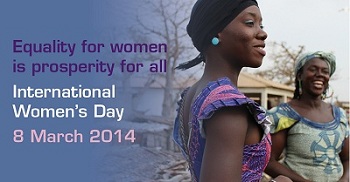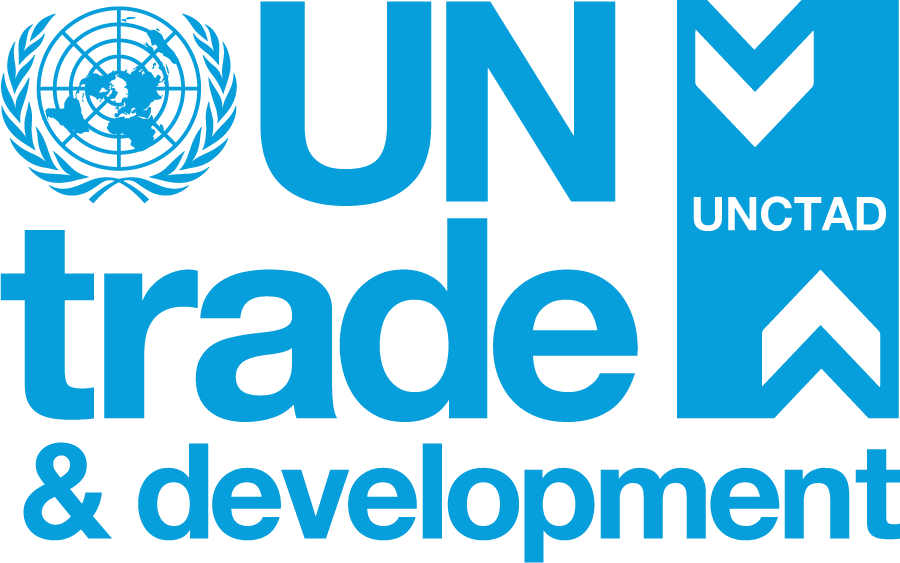07
March
2014
Post-2015 development framework: UNCTAD's views on promoting gender equality and using trade as an enabler for development
 |
The UN’s theme for this year’s International Women’s Day is “Equality for women is progress for all”.
International Women’s Day marks women’s long history of struggle to obtain basic labour rights and universal suffrage in the last century. It is a day of solidarity that connects movements and initiatives to advance women’s rights further and has been celebrated since 1975, which was declared International Women’s Year by the UN.
International Women’s Day marks women’s long history of struggle to obtain basic labour rights and universal suffrage in the last century. It is a day of solidarity that connects movements and initiatives to advance women’s rights further and has been celebrated since 1975, which was declared International Women’s Year by the UN.
In the last decade, the MDGs have served to mobilize support and action on gender equality and development in different areas.
Gender parity has been achieved in primary education enrolment in most countries and the increase in the proportion of women in parliament has been impressive. However, there are important areas in which progress has been less than satisfactory: significant gender gaps exist in employment rates, social protection and secondary and tertiary education; maternal mortality continues to be high and official development assistance for gender equality remains inadequate.
Gender parity has been achieved in primary education enrolment in most countries and the increase in the proportion of women in parliament has been impressive. However, there are important areas in which progress has been less than satisfactory: significant gender gaps exist in employment rates, social protection and secondary and tertiary education; maternal mortality continues to be high and official development assistance for gender equality remains inadequate.
The gender equality Goal (3) of the MDGs has also been criticized for not paying enough attention to the structural causes of gender inequality such as violence against women, systematic gender-based discrimination and lack of access to economic resources while focusing mostly on education and reproductive health.
Similarly Goal 8, on fostering a global partnership for development, was supposed to mobilize support from rich countries for development in the form of trade policy concessions, higher aid, debt relief and capacity building but has been found weak in design and lacking in implementation. These areas need to be strengthened in the emerging post-2015 development framework.
Similarly Goal 8, on fostering a global partnership for development, was supposed to mobilize support from rich countries for development in the form of trade policy concessions, higher aid, debt relief and capacity building but has been found weak in design and lacking in implementation. These areas need to be strengthened in the emerging post-2015 development framework.
UNCTAD analytical work has highlighted that women face some common structural constraints across countries and regions such as:
i) segmentation in low-value added and labour-intensive or subsistence-oriented work;
ii) unequal access to productive resources such as land, facilities, credit, technology, including ICT;
iii) low access to training and skill-building due to gender segment in education and employment, lack of resources (time and income) and social and cultural barriers;
iv) heavy burden of care work and domestic responsibilities.
i) segmentation in low-value added and labour-intensive or subsistence-oriented work;
ii) unequal access to productive resources such as land, facilities, credit, technology, including ICT;
iii) low access to training and skill-building due to gender segment in education and employment, lack of resources (time and income) and social and cultural barriers;
iv) heavy burden of care work and domestic responsibilities.
Thus, to address gender equality in the post-2015 development agenda, UNCTAD is of the view that there is a need to a deeper examination of issues such as eliminating the gender wage gap, reducing women's share of vulnerable employment, eliminating gender segmentation in the labour market and ensuring women have equitable access to productive resources.
On economic development and trade, we recommend conducting gender impact assessments for all trade and investment agreements, evaluating whether and how trade contributes to inclusive development, ensuring that industrial upgrading and commercialization does not exclude women, ensuring persons adversely affected by trade are compensated or reintegrated into the labour market and finally, providing social safety nets to address the economic insecurity and volatility as a result of trade.
On economic development and trade, we recommend conducting gender impact assessments for all trade and investment agreements, evaluating whether and how trade contributes to inclusive development, ensuring that industrial upgrading and commercialization does not exclude women, ensuring persons adversely affected by trade are compensated or reintegrated into the labour market and finally, providing social safety nets to address the economic insecurity and volatility as a result of trade.
The new sustainable development goals framework, we hope, will build on the strengths of the MDGs but also take into account the critical lacunae in its design that the experience of the past two decades has revealed.


